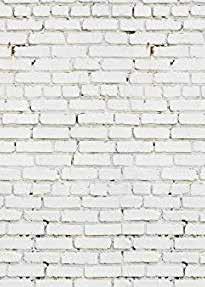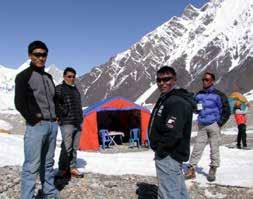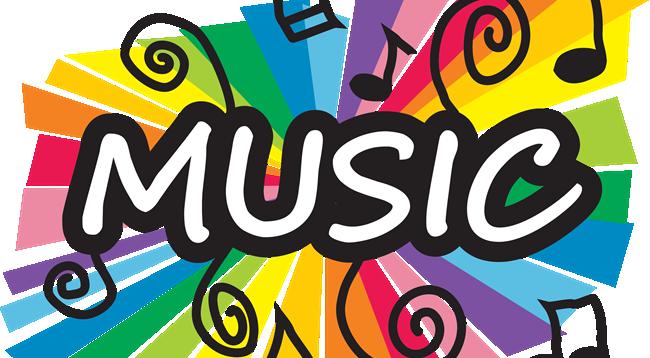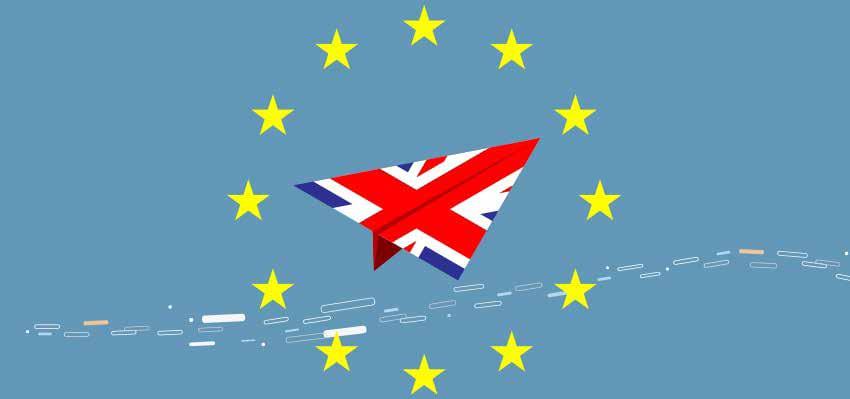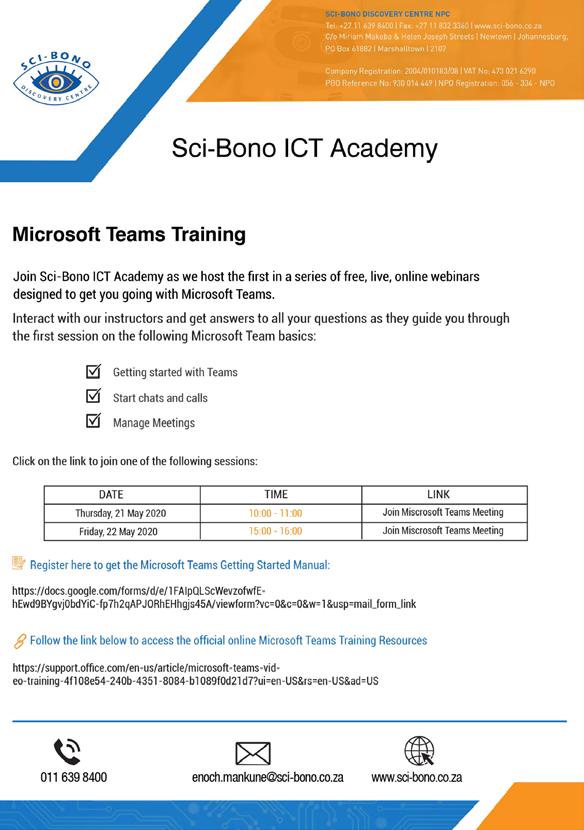
17 minute read
Vaccine - closer
Covid-19 vaccine status
A range of countries are pooling their resources and making money available.
Advertisement

Wiki: “The Coalition for Epidemic Preparedness Innovations (CEPI) – which is organizing a US$2 billion worldwide fund for rapid investment and development of vaccine candidates -indicated in April that a vaccine may be available under emergency use protocols in less than 12 months or by early 2021”


This is probably the earliest we can expect a safe and efficient vaccine. Six candidates are now going into the last test phase – phase III.

The six top candidates are using very different technologies.
Gam-COVID-Vac Lyo, product developed in Russia, has been registered by 11 August. However, the clinical test data has not been released as of yet. This is important as it will give the globe the chance to evaluate the vaccine.

Wiki: “Gamaleya’s vaccine candidate is a viral vector vaccine based on human adenovirus — a common cold virus —

fused with the spike protein of SARS-CoV-2 to stimulate an immune response”. This is tested technology; hence the speed with which it has gone through developments.
Oxford University and Astra Zeneca: Here we are looking at a vaccine that will attack the ‘spikes’ of the Corona, limiting its ability to penetrate not living cells. It is coming from

Moderna: The technology is brand-new. It is mRNA – messenger RNA – that is injected. It is not a full piece of DNA, but only the bit that can encode cells to recognise the spikes of Corona and provide immunity. It is now in phase III where some 30,000 people will be enrolled in the trials.
CanSino Biologics: A traditional vaccine based on animal trials and developments. It is aimed at going into Phase II trials with 40,000 enrolled.
BioNTech: Brand-new technology. The company is focused on providing medication for cancer treatment and vaccines for virus-based diseases. It is gain technology based on usage of mRNA technology.



Sinovac Biotech Ltd: Here we are looking at some tried and tested technology. It is based on chemically-inactivated Covid-19 virus. It will be recognised by the host, where the host will provide the ani-bodies etc. As the virus is inactivated, it cannot infect a person.


Inovio Pharmaceuticals: The technology platform is new. Engineered DNA will be injected and the host cells will produce specific T-cells and antibodies which will fight off the virus. Complete artificial DNA vaccines are new and the trials will show it safety in humans.
Into the trials now closer, but still far

There are plenty of new initiatives and it is encouraging that phase III trials are now attempted. However, ‘cutting corners’ might be results and that is where the danger comes in.
When we are looking at numbers of 100 million doses made available within a short space of time, we can only hope (and trust) that the vaccine is safe.
The consequence of an unsafe vaccine when looking at these numbers, might be worse than the disease. And after all the Socrates oath has something like ‘… and do no harm’. Meaning, don’t hurt the patient.
Can a vaccine go wrong? There are a few examples and the worst one is probably the case of Thalidomide.
Thalidomide was approved in Germany in 1957. It was designed as a cancer treatment and against several skin diseases.The horror began when it was also claimed to cure ‘morning sickness’. In 1961 the amount of birth defects was finally recognised. 10,000 babies were born with defects and 40% died at birth.
Phase III trials: This is the last step before a vaccine is declared approved and certified. It is gathering a huge group of people (10,000+) and providing the vaccine for some and placebo for others. There is more to it, but this is the essence.
By nature it has to be lengthy due to amount of people involved. The data gathered is huge and it has to be analysed. It takes time!
Is it always just a formality? Wiki: “As of 2010, about 50% of drug candidates either fail during the Phase III trial or are rejected by the national regulatory agency. For vaccines, the probability of success ranges from 7% for non-industry-sponsored candidates to 40% for industry-sponsored candidates” Doing a rush-job is not in the interest of anybody. The result of Phase III is a massive report which FDA and others can use for their approval (or rejection) of a vaccine. Just reading the thing takes a lot of time and bandwidth of serious researchers and authorities.
But can it be speeded up? Not really, although if a vaccine is deemed as likely to produce, it can be given to select groups. This is not necessarily taking a chance as some technologies are now traditional and the success rate deemed sufficient to issue a temporary approval. However, there no guarantees.
There are plenty of new initiatives and it is encouraging that phase III trials are now attempted. However, ‘cutting corners’ might be results and that is

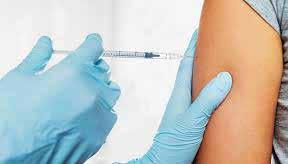
When we are looking at numbers of 100 million doses made available within a short space of time, we can only hope (and trust) that the vaccine is safe.
The consequence of an unsafe vaccine when looking at these numbers, might be worse than the disease. And after all the Socrates oath has something
Can a vaccine go wrong? There are a few examples and the worst one is probably the case of Thalidomide.
Thalidomide was approved in Germany in 1957. It was designed as a cancer treatment and against several skin diseases.The horror began when it was also claimed to cure ‘morning sickness’. In 1961 the amount of birth defects was finally recognised. 10,000 babies were born with defects and 40% died
Phase III trials: This is the last step before a vaccine is declared approved and certified. It is gathering a huge group of people (10,000+) and providing the vaccine for some and placebo for others. There is more to it, but this is the essence.
By nature it has to be lengthy due to amount of people involved. The data gathered is huge and it has to be analysed. It takes time!
Is it always just a formality? Wiki: “As of 2010, about 50% of drug candidates either fail during the Phase III trial or are rejected by the national regulatory agency. For vaccines, the probability of success ranges from 7% for non-industry-sponsored candidates to 40% for industry-sponsored candidates”
The result of Phase III is a massive report which FDA and others can use for their approval (or rejection) of a vaccine. Just reading the thing takes a lot of
But can it be speeded up? Not really, although if a vaccine is deemed as likely to produce, it can be given to select groups. This is not necessarily taking a chance as some technologies are now traditional and the success rate deemed sufficient to issue a temporary approval. However, there no guarantees.
PROGRAMMES OFFERED
DHET TVET College Bursary Scheme (Terms and Conditions apply)
NCV NQF LEVEL (2-4)
Requirements:Completed & Passed Grade 9, 10 or 11 Duration 1yr per leve l
BENONI CAMPUS

Management (Wholesale & Retail) Office Administration
SPRINGS CAMPUS
Finance, Economics & Accounting Marketing Information Technology & Computer Science • • Tourism Hospitality
DAVEYTON CAMPUS CENTRE OF SPECIALISATION IN BOILERMAKING
Electrical Infrastructure Construction Engineering and Related Design (Mechanical)
PRE-VOCATIONAL LEARNING PROGRAMME (PLP)
Duration: 1 year Entry Requirements: Passed Grade 9 (did not pass placement evaluation test)

OFFERED AT SPRINGS CAMPUS ONLY
• Foundational English • Foundational Mathematics • Foundational Science • Foundational Life Skills
KWA-THEMA CAMPUS
Electrical Infrastructure Construction • Engineering and Related Design (Mechanical) Process Plant Operations
ARTISANS & SKILLS DEVELOPMENT CENTRE
Civil Engineering & Building Construction (NQF Level 2-4) • Learnerships, Skills Programmes & Projects
REPORT 191 (N4 – N6)
Requirements: Completed & Passed Grade 12 Duration Trimester/Semester
BENONI CAMPUS
Financial Management Marketing Management Management Assistant Human Resource Management Electrical Engineering (N1 – N3) Mechanical Engineering (N1– N3)
BRAKPAN CAMPUS
Financial Management Marketing Management Management Assistant
SPRINGS CAMPUS
Financial Management Marketing Management Tourism Hospitality
DAVEYTON CAMPUS
Mechanical Engineering Electrical Engineering
KWA-THEMA CAMPUS
Mechanical Engineering Electrical Engineering Civil Engineering
ICT OPEN LEARNING SPRINGS CAMPUS
ICDL MS Digital Literacy CISCO IT Essentials COMP TIA N+
PROGRAMMES OFFERED
DHET TVET College Bursary Scheme (Terms and Conditions apply)
STUDY FULL TIME OR PART TIME
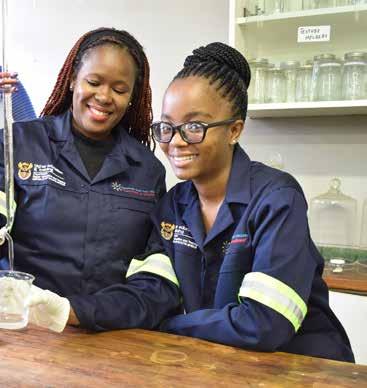
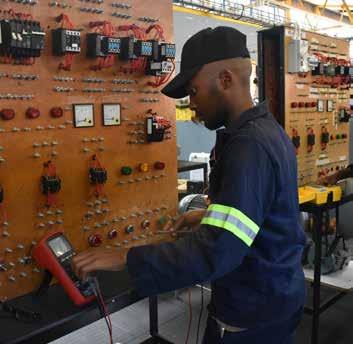
ENGINEERING SCHOOL
BENONI CAMPUS
N1-N3 MECHANICAL ENGINEERING N1-N3 ELECTRICAL ENGINEERING
KWA-THEMA CAMPUS
N4-N6 MECHANICAL ENGINEERING N4-N6 ELECTRICAL ENGINEERING N4-N6 CIVIL ENGINEERING DAVEYTON CAMPUS
N4-N6 MECHANICAL ENGINEERING N4-N6 ELECTRICAL ENGINEERING
PROGRAMMES OFFERED
DHET TVET College Bursary Scheme (Terms and Conditions apply)
STUDY FULL TIME OR PART TIME
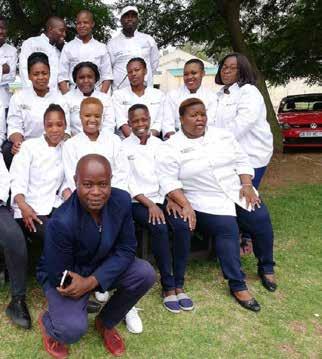
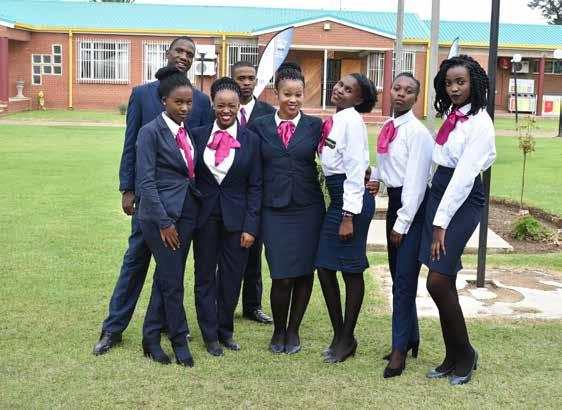
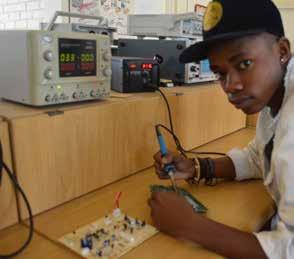
BUSINESS SCHOOL
- N4-N6 FINANCIAL MANAGEMENT (BENONI, BRAKPAN, SPRINGS) - N4-N6 MARKETING MANAGEMENT (BENONI, BRAKPAN, SPRINGS) - N4-N6 HUMAN RESOURCE MANAGEMENT (BENONI) - N4-N6 MANAGEMENT ASSISTANT (BENONI, BRAKPAN)
SCHOOL OF CREATIVE & SOCIAL SERVICES (N4-N6 FULL TIME)
- N4-N6 TOURISM (SPRINGS ONLY) - N4-N6 HOSPITALITY (SPRINGS ONLY)
higher education & training
Department: Higher Education and Training
REPUBLIC OF SOUTH AFRICA
S C H O O L O F E N G I N E E R I N G
DAVEYTON CAMPUS
E N G I N E E R I N G F O S C H O O L
KWA-THEMA CAMPUS
O O L H C S B U S I N E S S
BENONI CAMPUS
S C H O O L O F E N G I N E E R I N G N 1 - N 3
BRAKPAN CAMPUS

B U S I N E S S S C H O O L
B U S I N E S S S C H O O L | S C H O O L O F C R E A T I V E & S O C I A L S E R V I C E S SPRINGS CAMPUS
REGISTRATION DATES...
ENGINEERING STUDIES
Trimester 2 registration starts: 20 April 2020 Classes commence: 11 May 2020
Trimester 3 registration starts: 17 August 2020 Classes commence: 07 September 2020
BUSINESS SCHOOL SCHOOL OF CREATIVE & SOCIAL SCIENCES
Semester 2 registration starts: 22 June 2020 Classes commence: 13 July 2020
DOCUMENTS REQUIRED
1. Student ID certified copy (x3) 2. Parent(s) / Guardian ID certified copy (x3) 3. Proof of address (x3) i.e The student's home address and not a box number. If a student comes from KZN, Limpopo, Soshanguve, etc the address must be from he/she comes from. Proof of address could be: 3.1 Certified Letter from the Local Municipality bearing the Municipality logo 3.2 Municipality bills receipt certified 3.3 Any retail shops certified statement such as Edgars as an example but not a bank statement 3.4 A letter from the traditional leader if coming from a village. The letter must bear the signature of the traditional leader and a stamp from the tradition leader. 4. Certified proof of income of parent(s) /Guardian (x1) 5. Student's bank statement (x1) 6. Lease agreement (x1) signed by both the student and the property owner 7. Certified Parent(s) Death Certificates (x1) 8. Certified student's results (x3)
NB: ALL DOCUMENTS MUST BEAR A CERTIFICATION STAMP NOT OLDER THAN 3 MONTHS
TO APPLY ONLINE:
https://eecapp.eec.edu.za/pls/prodi03/gen.gw1pkg.gw1startup?x_processcode=ITS_OAP
TEL: (011) 730 6600, WEBSITE: www.eec.edu.za, EMAIL: info@eec.edu.za
1918: The Spanis Flu
Can we learn something?
It is easy to claim that the 1918 pandemic can be compared to what we go through right now.
After all, the 1918 pandemic was global, high mortality rate and infected millions.
All of that said, is it a fair comparison? Can we learn something from 1918?
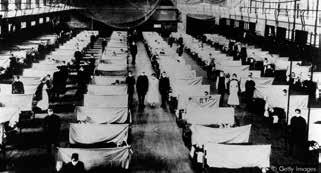
Let us recap a few things first (inspired by Wiki). 1918 flu was a strain of H1N1 flu. It infected (probably) some 500 million people (one third of the world population at that time) and killed anything between 17 and 50 million people. Case Zero is typically claimed to be on 4 March 2018 in a cook in the US Army barracks preparing to sail for Europe to join Word War I. The cook was obviously in contact with a lot of people and within days 552 people were infected. In April 2018 it had spread to Europe via the US troops and now it infected the best part of Europe. Asia was not spared. June saw the first cases in China. It was now a global pandemic.
But there is more to this. It had four distinct waves with different characteristics.
1918: The Spanis Flu
Can we learn something?
Wave 1 (early 1918) was comparable to a severe flu outbreak, but not greatly different from seasonal flu. It typically attacked the elderly and the sick. Wave 2 (late 1918) was the one we typically associate with this pandemic. This wave typically killed the young. The spread was aided by troop movements as WWI ended, the Russian revolution movements of populations (and troops), the exchange of populations across Europe and so on. No quarantine or isolation were possible and it just escalated.
Wave 3 and 4 saw the pandemic fading away. Why so deadly? A couple of factors. Soldiers in their prime got infected and because their immune system was gong full force, it caused a cytokine storm. That is where the immune system goes into over-drive and is killing tissue as well. This is where a lot of the direct flu deaths came from.
All of this combined with poor hygiene (difficult in the trenches of a war), malnourishment, overcrowding in camps and the typical problems associated with population movements created the conditions for additional infections. So although the N1H1 flu was deadly it was not extremely deadly in itself. It just opened the way for the classical bacterial infections in the likes of TB, typhoid, Cholera and so on.
… and that is why it is difficult to compare to what we have now

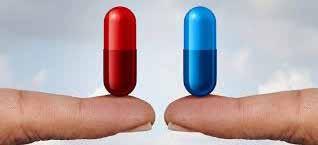
generic and clones
Let it be said: we are talking billions here. Pharmaceuticals are not charities so let us have a look at how the world works. This is all inspired by Wiki and quotes are clearly marked.
Any type of medication must be proven to be effective and not harmful. That means that the development time is long as such testing takes time. It can even be into years. The average approval time is about two years.
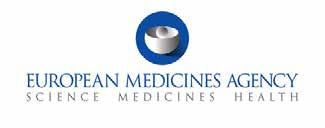
Thereafter, a competent authority must approve the medication. FDA from the US is perhaps the biggest organisation controlling and certifying medication. It is the reference for many other countries as it has the ‘muscle’ to perform the task of scrutiny and testing.
That is why FDA approval is essential to anyone developing a new drug.
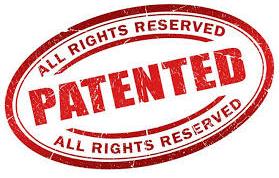
European Medicines Agency (EMA) is the EU equivalent. The aim is to ensure that a developer need not apply for approval in every member state.
But what is the cost then of developing a new drug? Average is $2,4 billion (2014). It includes both research, development, approvals and everything else. In essence: from idea to hitting the shelves.
Comparison: The average development cost of a new car is $1 billion. It can be up to $6 billion or more.
Let us take this comparison further: If anyone should build a car identical to say Rolls-Royce Cullinan (calling it Rolls-Rumble Koh-I-Noor), well, they would be sued – fast. But what about drugs?

Insofar as a new drug is made from chemical substances that (by and large) anyone can manufacture and the recipe is not a secret, there is really no protection for the original developer.
So, how do they recoup their money? Spending $2 billion on research for others to benefit and out-compete them is not fair.
This is where the patent comes in. Typically the original developer is afforded 20 years of protection. That should ensure that the original developer can make a profit and afford to continue developing drugs. After all, not everyone has the start-up money for these things.


It is not just the development cost of a drug. It is also the development costs of the drugs that turn out not to be good, or not approved, or downright failures. There are many products that never see the shelves and that also needs to be financed.
and a lot more on generics
... and money
Generic drug is really a horrible term. It does not describe what it is. Let us therefore unpack it.
When a patent runs out, other manufactures can produce a similar drug. It has to have the same active ingredients as the original, but it can of course look different in terms of taste, colour and shape.
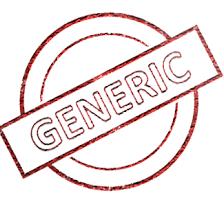
They are still regulated to ensure that they are identical to the original.
The price for generic is typically far lower than for the original product and that is where medical aid schemes encourage the dispensing pharmacy to suggest the usage of generic medication.
Insofar as there might be several companies manufacturing a specific drug after the patent has lapsed, we see competition among the generic drug manufactures.
All in all, medication will get much cheaper and that means affordability for a lot more people in need.
We may ask ourselves if this is ‘real’ money? India is one of the top countries in manufacturing and exporting generic medication. The value of the Indian export alone is some $20 billion. That is real money.
Is the world of pharmaceuticals then original manufacturers on one side and the rest on the other side when the patent has lapsed? Not really.
In comes the clone. A clone is (essentially) the original product, manufactured by the developer, but marketed under a different name and sold after the patent lapse. It is 100% identical to the original (coming out of the same extruder!).
Confusing? Not really either. The original manufacturer, the developer, typically has a huge marketing budget and can afford to run a couple of product lines. One for the original product and another (or more!) lines which will now directly compete with the companies doing the generic product.
Rather have additional income from also doing a clone than just looking on other people’s generic drugs.
Next time at the pharmacy, ask the right questions.

Are pharmaceuticals big?
7th biggest company in the world: UnitedHealth – turnover $242 billion Johnson & Johnson: Revenue: $82 billion Roche: Revenue: $57 billion Bayer: Revenue: $51 billion
Pharmaceuticals are indeed big business.



